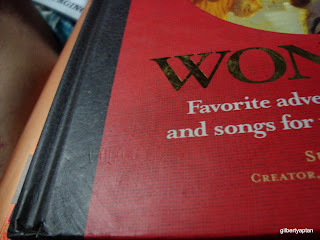A Token of Our Friendship
Philippine Photos of Male Affection - First Half of the 20th Century
by John L. Silva
John L. Silva and I became friends in Facebook because of the "Jan-jan incident" in the Willing Willie game show. John Silva was among the first to denounce on Facebook what was done to the boy who cried while performing a dance usually done by macho dancers in gaybars. And I would tag him whenever there were other online developments and opinions on the incident. He called for the advertisers to withdraw their ads in the show. For his crusading efforts, John was named in a libel case filed by Willie Revillame.
John Silva was Senior Consultant to the National Museum and was recently appointed by President Aquino as Commissioner to the Unesco. He writes and blogs about cultural matters, heritage and history. He also wrote an arts appreciation book for public school teachers.
The Intrigue of the Implied
Before John Silva announced the launch of his book, A Token of Our Friendship in July this year, I was able to browse through two large-format photo books by Evan Bachner in my fave used book store.
These books collects "images of comradeship, particularly of men being physically close, largely disappeared from the public record. But, as these stunning photographs attest, ordinary American men in the extraordinary circumstances of World War II were affectionate, winsome, and playful-disarmingly innocent in a time of cataclysmic peril." Unlike the usual photos we see of men in uniform in combat, the ones in these books show how these same men behave away from the battle zones.
Both Evan Bachner and John Silva are longtime collectors of photographs. And so I was quite intrigued by the book of John Silva, subtitled Philippine Photos of Male Affection - First Half of the 20th Century. I ordered a copy of it from John himself and he graciously sent it to me with an inscription.
The book is divided into three sections: Solo Images, Couples, and Group Poses.
I was drawn to the Solo Images section. The photos in it resonate with implied "aloneness" as in the picture below:
 | |
| Page 30 of A Token of Our Friendship |
There is the implicit plea in these photos: don't ever forget me even if this is just a poor likeness of myself.
In the Couples section, the male affection is shown between the two men in the photos in terms of hand draped over the other's shoulder and/or arm wrapped around the waist of the other. There's the furtive holding of hands like in the photo below:
 |
| Page 95 of A Token of Our Friendship |
In this section, the most puzzling picture is the one with the inscription at the back that says: "Bebing, ... consider it great for there is a hidden symbol in it. You friend forever, Beny & Pit"
 |
| Page 78 of A Token of Our Friendship |
In my attempt to figure out the hidden symbol, I take my cue from "your friend forever, Beny & Pit". Bebing's friend (note the singular form in the complimentary close) is definitely Beny and not Pit. And that is just one of the tantalizing intrigues of the implied in this book.
In the Group Poses section, the photos of trios can be divided into two groups: the triumvirate (all three men are equals) and the couple + the odd-man-out (saling-pusa).
 |
| A sample of the triumvirate, page 147 of A Token of Our Friendship |
In the following samples of the Couple + odd-man-out (saling pusa) Group Pose, any student of human behavior can see in the body language of the couple how the odd-man-out is excluded in their affection for each other:
 |
| (Page 8) Note the possessive hands on the arms. |
 |
| (Page 118) Note the middle man's shoulder turned away from the one at left but turned toward the one at right |
 |
| (Page 132) Note the distance of the odd-man-out from the couple |
 |
| (Page 146) Looks like a rigodon de amor |
John Silva, in several interviews for the book launch, said: In the book, "one who could almost relive the scenes of the past: manners, dressing, movements, and forms of affection now unknown to us." Indeed, I spent several hours pouring over the photos examining the clothes, shoes (are those two-toned Ang Tibay shoes?), ties (owned and borrowed), the implied affection in the poses, the inscriptions (what do they really mean by "original" then?) and had sneak peeks of how these men lived in various decades of the first half of the 20th Century.
Thank you, John, for such an engrossing read!




















































